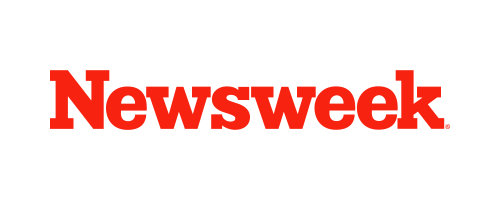Skip to the good bit
ToggleThe construction management software market stands at $10.56 billion in 2024 and experts predict it will reach $16.5 billion by 2029. These figures tell a story of transformation in modern construction project management.
Research shows that companies using automated construction management tools see their labor productivity soar by 45%. Companies that utilize AI-powered software experience 30% fewer engineering hours, reduce timeline problems by 20%, and save 15% on costs. Project managers know this well – 8 out of 10 call project portfolio management a vital part of business success.
1. Premier Construction Software: The Ultimate All-in-One Solution
Premier Construction Software leads the cloud-based construction management software market. Forbes Advisor has ranked it #1 for three years straight. Most traditional systems split up project data, but Premier gives users a complete ERP solution built specifically for construction companies.
Key Features of Premier Construction Software
The software brings all essential functions together on one platform. Users don’t need multiple separate systems anymore. Premier combines financial management, job costing, project management, and field operations with AI capabilities built right in. Companies can manage unlimited businesses, LLCs, and joint ventures while the system handles intercompany transactions automatically. The software speeds up approvals for invoices, RFIs, purchase orders, and submittals. This cuts down office work by about 80%.
How Premier Streamlines Project Management
Teams can see all their KPIs, risk factors, and financial summaries on central dashboards that let them dig deeper into the details. The mobile interface gives access to live data from any location. Premier’s drawing management helps track versions and changes. This makes sure everyone uses the most current documents. Project managers save 10–12 hours each week thanks to these optimized processes.
Premier’s Cost Control Capabilities
The system stops cost overruns by tracking expenses as they happen. It watches labor, materials, and overhead costs while setting up automatic alerts for spending limits. The software can track costs across five different levels (buildings, lots, phases) for better financial control. Premier’s system creates dynamic forecasts for Estimate at Completion (EAC) by combining current costs with predicted expenses. The platform also offers 35+ customizable reports that show budget comparisons, margins, and overdue items.
User Experience and Interface
Premier’s modern, accessible interface cuts down training time substantially. The user-friendly design includes a single inbox for approvals and updates, which keeps the core team in sync. Mobile users get full offline access and automatic updates when they reconnect. The cloud setup on Azure provides security through AES-256 encryption and follows global data privacy rules.
2. Procore: Best for Comprehensive Project Tracking
Procore stands out as a strong alternative with excellent project tracking capabilities and detailed features. The platform brings field and office teams together through immediate data exchange. Construction professionals find this especially valuable to improve their project visibility.
Procore’s Collaboration Tools
Procore reshapes the scene of project communication by putting all conversations in one place. Teams can communicate within the application and create topic-specific conversations. Users can mention individuals whenever needed. This approach helps stakeholders see all past project communications and reduces errors from scattered communication channels. The Connect feature lets teams share drawings safely between projects, so everyone works with updated revisions.
Document Management Features
Procore’s Document Management tool organizes and controls documents by their attributes instead of traditional folder structures. The automatic revision control helps team members access updated document versions. The system stores data safely with backups on multiple servers in different locations. Only authorized team members can view or change documents through permission-based access. The approval workflows simplify processes like design reviews.
Mobile Capabilities
Procore’s reliable mobile functionality comes through iOS and Android applications. Field teams stay productive whatever their location. The mobile platform works offline with cached items and syncs data once connection returns. Teams can use drawings, RFIs, punch lists, inspections, and daily logs right from their mobile devices. This brings office capabilities straight to the job site.
3. Autodesk Construction Cloud: Ideal for BIM Integration
Autodesk Construction Cloud stands out with its exceptional BIM (Building Information Modeling) integration. The platform brings together design, document management, and field operations in one cloud-based solution. This creates a continuous data flow throughout the project lifecycle.
Design Coordination Features
Powerful coordination tools make Autodesk Construction Cloud excellent at simplifying design cooperation. Teams can work together on coordinated designs whatever their location, role, or project stage. The platform’s automated clash detection system smartly identifies and groups conflicts. This saves countless hours of manual review time. Teams can see design changes by project phase or building level. They can learn about shared design data before accepting updates. Construction teams better understand how new information affects work-in-progress models. This reduces rework and non-recoverable costs before sharing with the broader team.
Field Execution Tools
Autodesk’s strong mobile capabilities connect office and job site effectively. The Autodesk Construction Cloud mobile app works with Autodesk Build, BIM Collaborate, and other offerings. Field teams can access critical project information even offline. Data syncs automatically when connection returns. Superintendents and project engineers make faster decisions with complete context using field cooperation tools. The platform simplifies daily processes between office, trailer, and job site. This improves document accessibility and team efficiency across locations.
Project Control Capabilities
Project managers get detailed control through Autodesk’s integrated tools. The system offers customizable workflows that link office and field operations while keeping projects on schedule. Teams track quality and safety using issues and forms. They organize information flow through RFIs, submittals, and meetings. The platform’s cost management features help teams track project finances. Immediate performance tracking ensures on-time, on-budget delivery. The platform merges with over 400 pre-built tools for ERPs, CRMs, document management, and analytics. This creates a unified ecosystem that increases efficiency.
4. Fieldwire: Top Choice for Field Teams
Fieldwire has become the go-to choice for field teams who need live site management capabilities. The platform simplifies job site operations through mobile-first functionality that caters specifically to field personnel’s needs.
Task Management Features
Fieldwire shines at organizing field work through location-based task management. Teams can drop tasks directly onto plants, add notes, and capture issues with photos and videos. The platform helps teams to:
- Create custom task statuses that match their exact workflows
- Import thousands of tasks via Excel or CSV files
- Track manpower and costs for every completed task
Field teams can quickly assign tasks to team members with the “@” symbol and set categories and priority levels simultaneously. iOS users can swipe right or left as a quick way to update task status without multiple screen navigation.
Plan Viewing and Markup Tools
Teams can access the latest drawings from any device through the platform’s plan management capabilities. Fieldwire’s markup toolbar comes packed with annotation options that include symbols for audiovisual, electrical, fire suppression, geometric symbols, and security elements. Teams can attach documents directly to plan sheets and use the selection tool to move and edit multiple markups at once.
The system’s version control shows all plan notes and lets users compare different versions, which keeps everyone working from current documents. Premium subscription users can export their plans as PDFs with all markups and hyperlinks intact.
Reporting Capabilities
Fieldwire gives teams three distinct report types to formalize field communication: PDF Summary for simple punch lists, Detailed PDF Reports for complete documentation, and Complete CSV Export for data analysis. Users can filter reports by specific criteria such as assignee, category, or time period.
Teams can set up automatic report delivery weekly or monthly to send information to stakeholders with or without Fieldwire accounts. This feature works great for punch lists, progress documentation, and site inspections.
Conclusion
Premier Construction Software leads the construction industry today. Forbes Advisor ranks it #1 for its detailed capabilities and cloud-based design. Construction teams have many software options beyond Premier. Procore excels at project tracking. Autodesk specializes in BIM integration.
Digital solutions give construction teams a competitive edge. Teams that use the right software see amazing results. Labor productivity jumps up by 45%. Engineering hours drop by 30%. Project costs decrease by 15%. Live collaboration, automated workflows, and mobile access help teams work better from anywhere.
Construction teams should pick software that matches their needs. Small contractors do well with Onsite’s simple platform. Large infrastructure projects work better with Primavera’s advanced scheduling tools. The right software choice lines up with your company’s size, projects, and team processes. This creates better project delivery and financial results.







